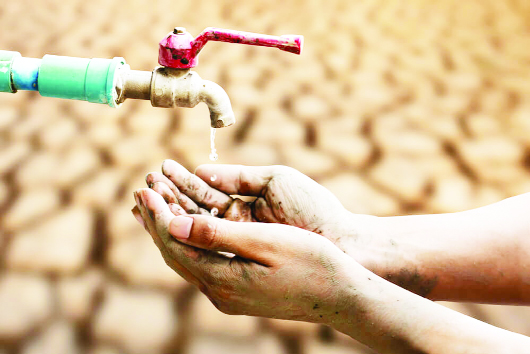Dr Rani Mughal
Water is considered sacrosanct in all major religions of the world including Islam, Hinduism, and Christianity. Holy water is used in Christianity for baptism whereas in Hinduism water is considered sacred, especially of the seven sacred rivers Ganges, Yamuna, Godavari, Saraswati, Narmada, Sindhu, and Kaveri. In Islam, the best form of charity is to give someone water. Many more examples can be given to illustrate the significance of water in our lives. However, despite water holding an important place in our religions, we fail to have a strategic approach towards its conservation.
But before we stress more on the need for water conservation let us look at it from a different perspective. A question arises that when our mother earth’s surface is covered with 71 % water why do we need to worry about water conservation? Why worry so much so as to dedicate a specific day, March 22, every year to remind ourselves, commit ourselves, and to spread awareness about the conservation of water?
Let us discuss this explicitly. It may surprise some that in spite of the 71% water cover, a major part of the world’s population is water deficit. This has put our Governments, NGOs, and scientists world over on their toes while they keep a watch on the global crisis of water. The United Nations (UN) estimates that, of the 1.4 billion cubic kilometers (1 quadrillion acre-feet) of water on Earth, just 200,000 cubic kilometers (162.1 billion acre-feet) is freshwater and fit for human consumption. A mere 0.014% of all water on Earth is both fresh and easily accessible. Of the remaining water, 97% is saline and a little less than 3% is difficult to access. Technically speaking, there is sufficient amount of freshwater on a global scale. Hence, in theory, there is more than enough freshwater available to meet the demands of the current world population of more than 7 billion people, and even support population growth to 9 billion or more. However the problem arises because of the the unequal geographical distribution and especially the unequal consumption of water. It is a scarce resource in some parts of the world while in other parts it is more than sufficient. When we look at our own, the erstwhile princely state of Jammu and Kashmir, the situation is distressing despite it being a global biodiversity hot spot. According to one study, due to ill-planned development and rapid urbanization, more than 50 percent of water bodies in Srinagar and its suburbs have disappeared during the last century which is alarming.
Jammu and Kashmir is one example among the many in the world that face this catastrophe. Now as so-called educated people of the 20th century, are we really worried about mitigating the global issue of water? Just as some may think that we need not worry when 71% of the earth’s surface is covered with water, there may be others who may presume that living as we are in a time where science has made wonders, our chemical scientists can artificially produce water in laboratories to meet out the grave issue of water. But just as in the previous case, there are major problems in the execution of the second idea as well.
Chemically water is H2O and the process of synthesizing water from hydrogen and oxygen gas represented by the chemical equation 2H2 + O2 = 2H2O + Energy, is theoretically possible but faces significant challenges in practical implementation. Despite being a known reaction for centuries, successfully executing it in a homogeneous solution remains elusive due to the substantial activation energy needed to separate hydrogen and oxygen molecules into their elemental forms. This energy requirement and the volatile nature of hydrogen gas makes large-scale water manufacturing through this method both expensive and hazardous.
Even if safety and energy challenges are overcome, ensuring the purity of hydrogen and oxygen gases is another critical hurdle. Contaminants introduced during the process can render the resulting water unfit for consumption and other essential applications. While technologies exist for producing purified gases, they are currently inefficient and economically unfeasible for large-scale water production compared to alternative conservation and purification methods. Therefore, while the idea of manufacturing water in laboratories appears feasible in theory, practical limitations related to safety, energy, and purity constraints hinder its viability as a solution to water scarcity on a significant scale.
So after considering the two alternative options we find that as of now the best option available to us is to conserve water. Aristotle said a long time ago,” If one way be better than another, that you may be sure is nature’s way”. So let us do it by conserving our nature and natural resources. Let our water conservation objectives spur us on to protect our natural water bodies and their aquatic environments. One way of doing it is to make sure that sufficient volume and quality of water remains in our rivers. Let us do this and all else that is needed to ensure that there is no shortage of water for ourselves, or for any other human being on this planet. Let us also do it for our future generations from whom we have this planet on lease.
(The author is Principal GDC Surankote)
Trending Now
E-Paper


